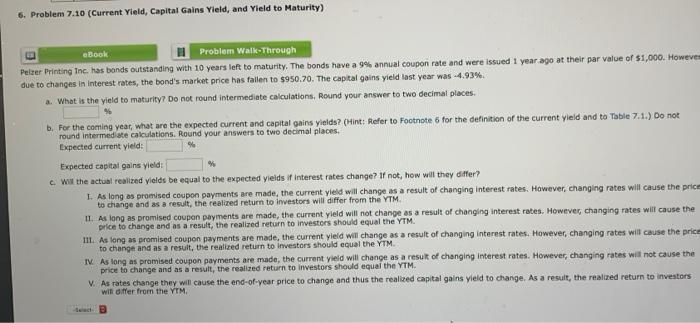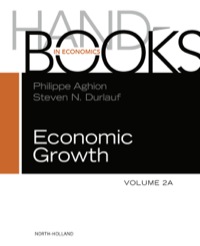6. Problem 7.10 (Current Yield, Capital Gains Yield, and Yield to Maturity) eBook Problem Walk-Through Pelzer Printing Inc. has bonds outstanding with 10 years left to maturity. The bonds have a 9% annual coupon rate and were issued 1 year ago at their par value of $1,000. Howeve due to changes in interest rates, the bond's market price has fallen to $950.70. The capital gains yield last year was -4.93% 2. What is the yield to maturity? Do not round intermediate calculations, Round your answer to two decimal places 4 b. For the coming year, what are the expected current and capital gains yields? (Hint: Refer to Footnote 6 for the definition of the current yield and to Table 7.1.) Do not round intermediate calculations. Round your answers to two decimal places Expected current yield: Expected capital gains yield: c. Wat the actual realized yields be equal to the expected yields of interest rates change? If not, how will they differ? 1. As long as promised coupon payments are made, the current yield will change as a result of changing interest rates. However, changing rates will cause the price to change and as a result, the realized return to investors will differ from the YTM II. As long as promised coupon payments are made, the current yield will not change as a result of changing interest rates. However, changing rates will cause the price to change and as a result, the realized return to investors should equal the YTM II. As long as promised coupon payments are made, the current yield will change as a result of changing interest rates. However, changing rates will cause the price to change and as a result, the realized return to investors should equal the YTM IV. As long as promised coupon payments are made, the current yield will change as a result of changing interest rates. However, changing rates will not cause the price to change and as a result, the realized return to investors should equal the YTM. a V. As rates change they will cause the end-of-year price to change and thus the realized capital gains yield to change. As a result, the realized return to investors wit differ from the YTM







